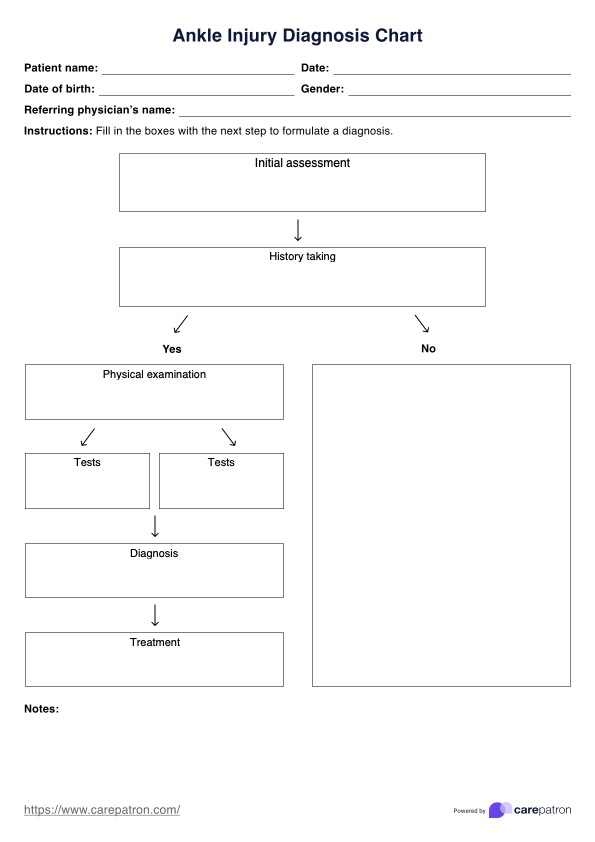Depending on the grade or severity, healing can take around three weeks to a few months.

Ankle Injury Diagnosis Chart
With our free Ankle Injury Diagnosis Chart template, you can learn more about ankle injuries and get a step-by-step guide on diagnosing them.
Use Template
Ankle Injury Diagnosis Chart Template
Commonly asked questions
Yes, most sprained ankles heal on their own.
Healthcare practitioners can use the ankle injury diagnosis chart during initial evaluation or review on how to diagnose an ankle injury.
EHR and practice management software
Get started for free
*No credit card required
Free
$0/usd
Unlimited clients
Telehealth
1GB of storage
Client portal text
Automated billing and online payments











